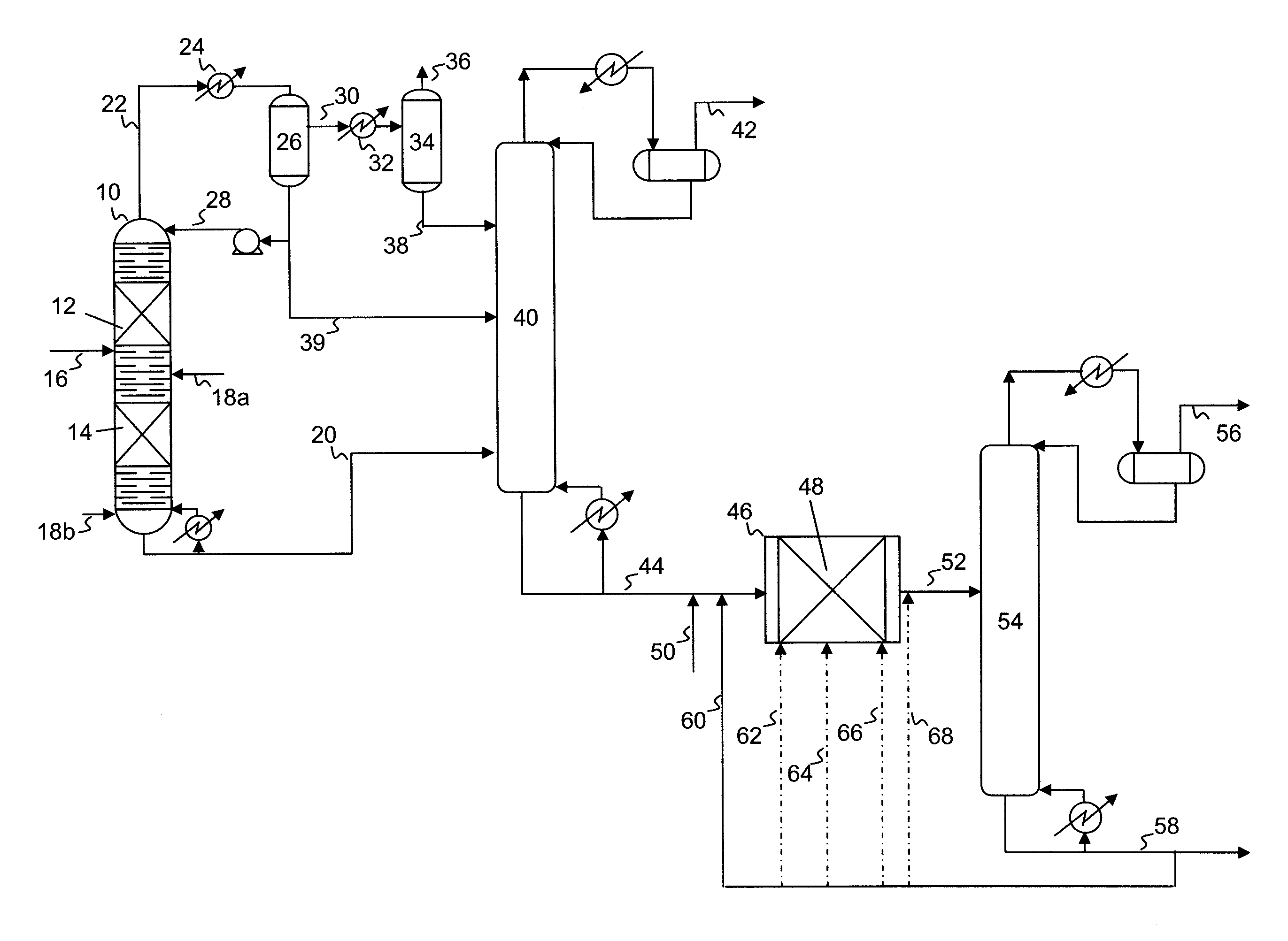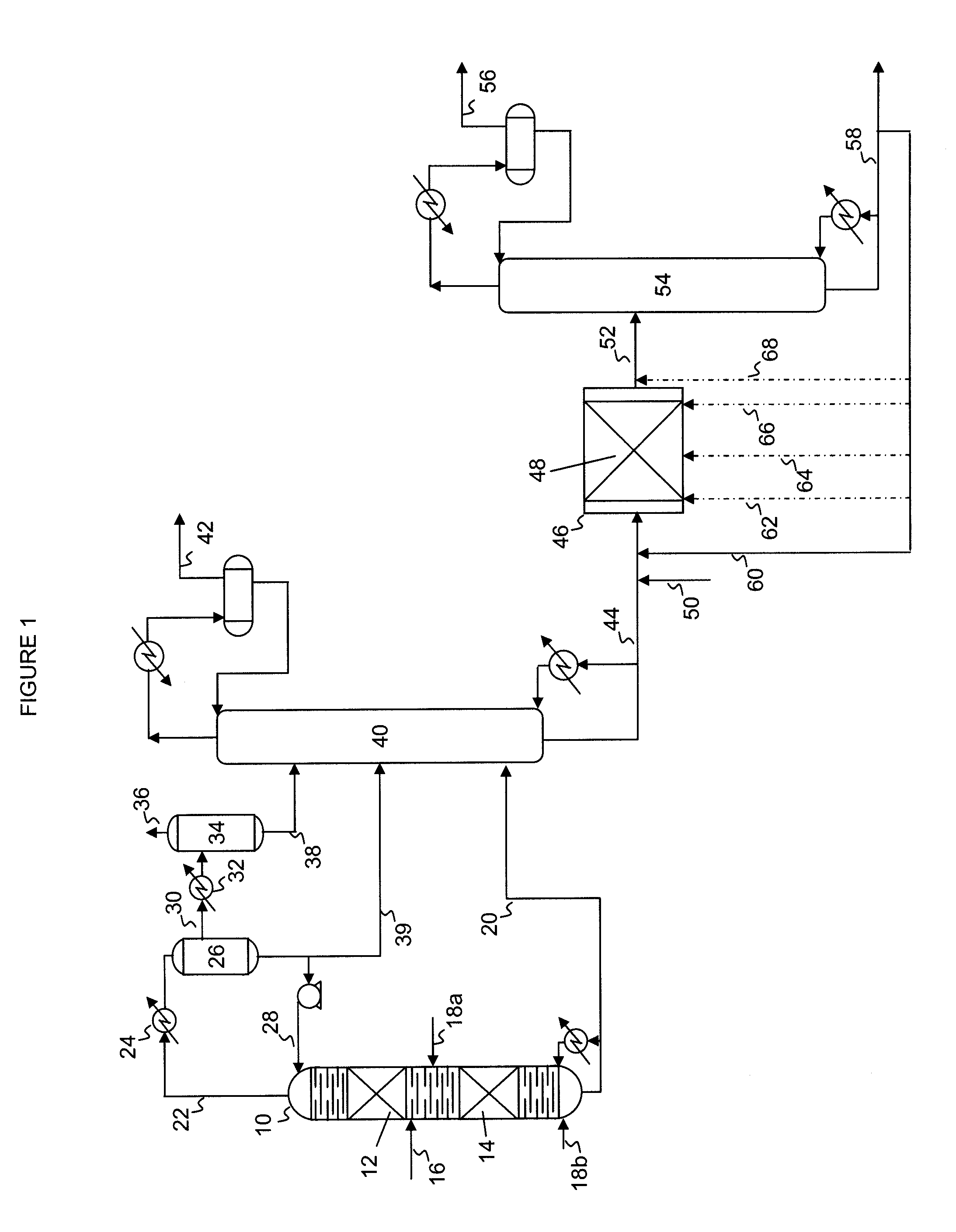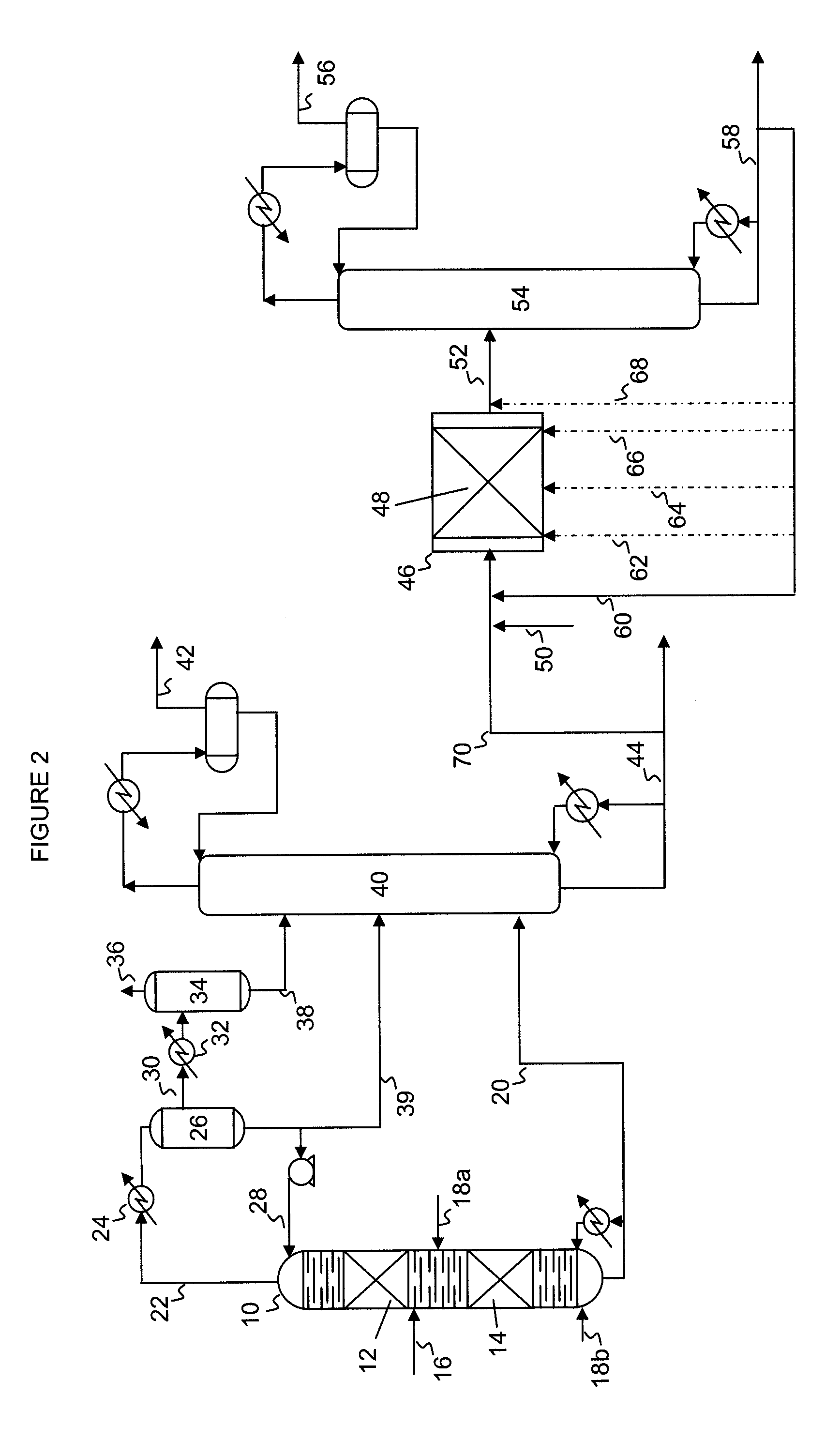Hydrodesulfurization process with selected liquid recycle to reduce formation of recombinant mercaptans
a technology of mercaptan and hydrodesulfurization process, which is applied in the direction of catalytic naphtha reforming hydrocarbon oil treatment, etc., can solve the problems of reducing octane, loss of source olefins, and loss of olefins by incident hydrogenation, so as to facilitate production
- Summary
- Abstract
- Description
- Claims
- Application Information
AI Technical Summary
Benefits of technology
Problems solved by technology
Method used
Image
Examples
example 1
[0084]A cracked naphtha having the following characteristics was first treated in a catalytic distillation column containing a commercial hydrodesulfurization catalyst. The hydrocarbon feed contained 2656 mg / liter of total sulfur and had a bromine number of 27.48. The hydrocarbon feed was fed between the two catalyst beds and had the following distillation properties (measured via ASTM D-86):
Initial boiling point200°F.10%231°F.30%259.5°F.50%302°F.70%350.4°F.90%394.3°F.Final boiling point435.8°F.
[0085]The overheads and bottoms fractions were recovered in a manner similar to that shown in FIG. 1, combined, and separated from hydrogen sulfide in a stripper. The bottoms product from the stripper contained 84 ppm of total sulfur, 34 ppm of mercaptan sulfur (RSH), and had a bromine number of 17.
[0086]The product from the stripper was sent to a polishing (fixed bed) reactor to further reduce the sulfur content. The fixed bed reactor feed was mixed in a 1:1 ratio by weight with product from...
example 3
[0093]A gasoline product recovered from the fixed bed reactor (without recycle) was distilled into two fractions. The composition of the stripped reactor effluent, the overhead fraction, and the bottoms fraction are shown in the table below.
StreamFeedOverheadsBottomsWt. % of feed 100%45.4%54.6%Total S (wppm) 12.63.518.74Bromine Number (g / 100 g) 18.536.64.8D-3710 Boiling Range10%18516531430%23119333750%29321536470%36224139690%416280435
[0094]The data in the above table clearly shows that the Bottoms product from the distillation is higher boiling and dramatically lower in olefin concentration (as measured by the Bromine number). Although the bottoms product is higher in sulfur concentration than the overheads, the sulfur concentration is lower than that of the feed. Thus, the advantages of recycling the Bottoms back to the fixed bed reactor may be effective at reducing the overall sulfur content of the final product and diluting the olefin concentration at the reactor outlet, redu...
example 4
[0095]Simulations were performed to predict the performance of the fixed bed reactor with different recycle streams. In case 1, the fixed bed reactor is operated with no recycle. In case 2, the fixed bed reactor is operated with recycle of product to the reactor. In case 3, only the heavy portion of the product is recycled to the reactor. In all 3 cases, the reactor is simulated at a LHSV of 10, 115 scf / bbl hydrogen, and the catalyst for the reaction is proposed to be a Co / Mo catalyst, DC-130, available from Criterion Catalyst Company. The simulation results are as follows.
Case123Operating Temperature (° F.)520520520Operating Pressure (psia)255254204Vapor fraction in Reactor0.85110.8490.8501Mass Ratio of Recycle to Feed00.4870.487Feed + Recycle Sulfur (wppm)10072.274.9Feed + Recycle Bromine Number2321.116.7(g / 100 g)Product Sulfur (wppm)2316.614.1Sulfur as RSH (wppm)4.32.51.9Product Bromine Number18.817.320.1(g / 100 g)
[0096]In comparing the results from the three cases, the benefits o...
PUM
 Login to View More
Login to View More Abstract
Description
Claims
Application Information
 Login to View More
Login to View More - R&D
- Intellectual Property
- Life Sciences
- Materials
- Tech Scout
- Unparalleled Data Quality
- Higher Quality Content
- 60% Fewer Hallucinations
Browse by: Latest US Patents, China's latest patents, Technical Efficacy Thesaurus, Application Domain, Technology Topic, Popular Technical Reports.
© 2025 PatSnap. All rights reserved.Legal|Privacy policy|Modern Slavery Act Transparency Statement|Sitemap|About US| Contact US: help@patsnap.com



